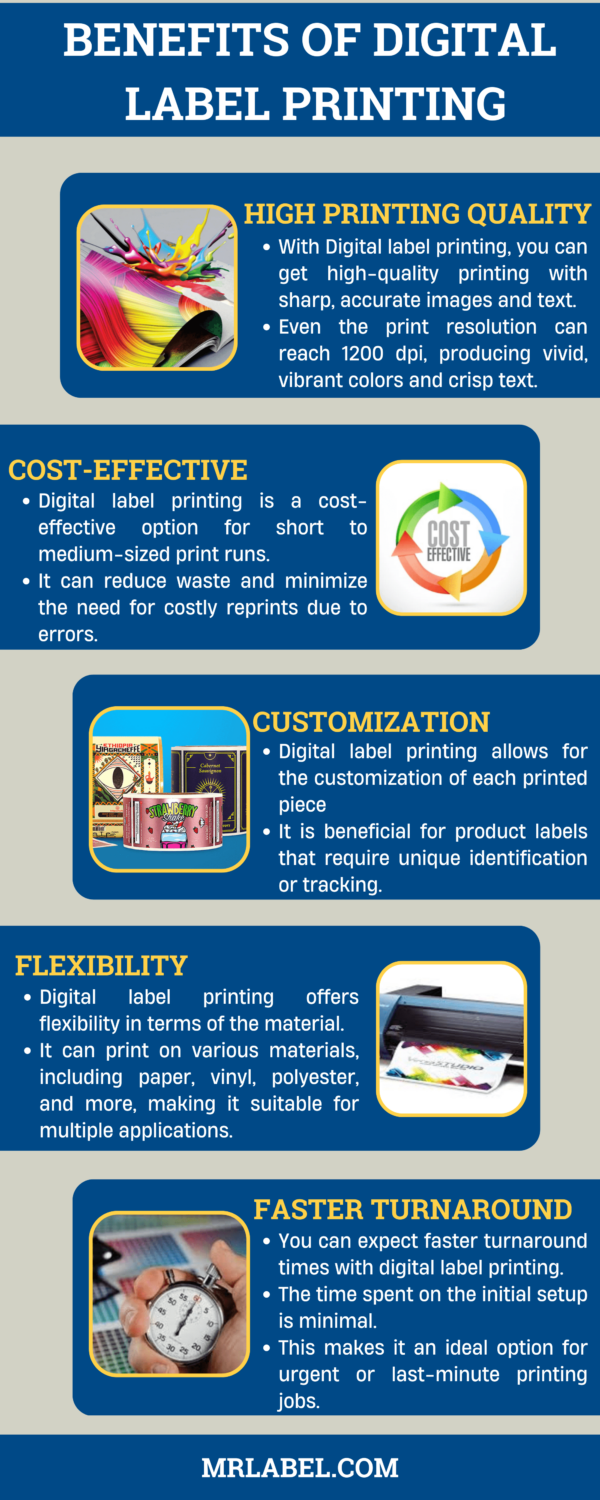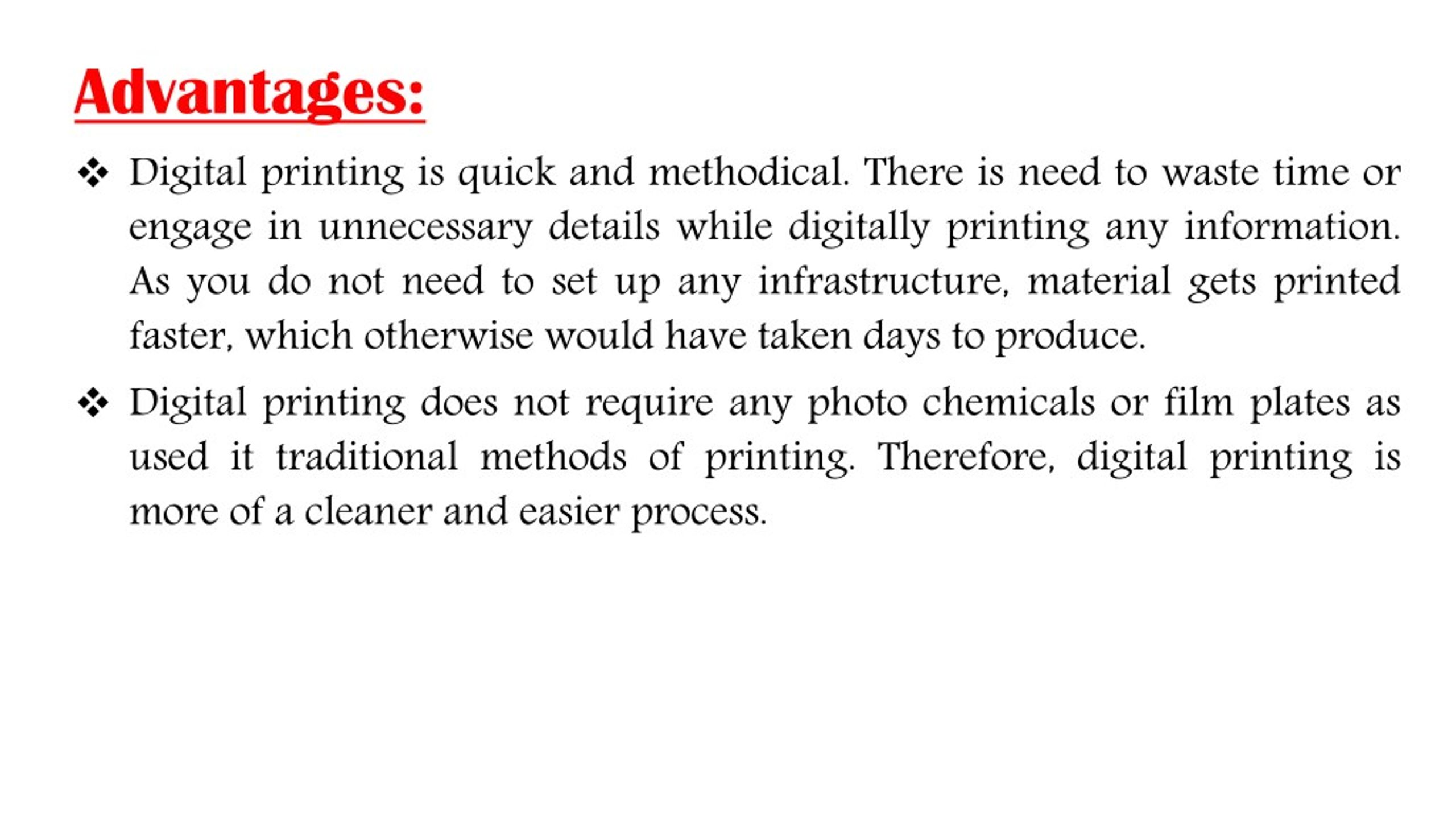Digital Printing for Dummies
Table of ContentsSome Known Factual Statements About Digital Printing Digital Printing - The FactsWhat Does Digital Printing Mean?A Biased View of Digital PrintingDigital Printing Fundamentals Explained3 Easy Facts About Digital Printing Described
Variable information printing, such as direct mail with individualized codes and addresses, is preferably suited for electronic printing. Digital quick printing just requires four steps of design, review, printing and binding to get every little thing done. Digital fast printing has an unequaled advantage: print on need.According to PMMI, electronic printing permits brand names and suppliers to respond promptly to client demands while boosting the supply chain, lowering warehousing price and waste, and enjoying faster time to market. That all sounds wonderful, yet exactly how does this modern technology do all that? The major differentiator of these modern technologies is that there are no set up costs and no plates with digital printing.
All about Digital Printing
This results in quicker turnaround time and decreases expense when utilizing electronic printing.
Fast manufacturing indicates obtaining your product to market much faster. It additionally means it's easier and faster to make changes later on, when you change a dish, add a SKU, or produce seasonal product packaging. Digital printing is very versatile, so it's simple to make changes to the plan design rapidly. Everything goes back to home plates.
Much more stock can mean more waste down the road. With standard printing approaches, short-run printing is simply not possible. Since an excellent design can make or break your product, digital printing continually produces premium, clear and vibrant graphics each time. Digital printing on adaptable pouches includes the brilliant, dynamic, and specific graphics that practically beckon consumers to connect and touch them.
Digital printing is the process of printing digital-based photos straight onto a selection of media substratums. There is no demand for a printing plate, unlike with countered printing. Digital documents such as PDFs or desktop publishing data can be sent directly to the electronic printing machine to publish theoretically, photo paper, canvas, textile, synthetics, cardstock and various other substrates.
Our Digital Printing PDFs
According to PMMI, digital printing enables brand names and makers to respond swiftly to consumer demands while boosting the supply chain, decreasing warehousing price and waste, and enjoying faster time to market. That all noises great, however exactly how does this innovation do all that? The significant differentiator of these innovations is that there are no set-up fees and no plates with digital printing.
According to Wikipedia, the greatest difference between digital printing and standard approaches such as lithography, flexography, gravure, or letterpress is that there is no requirement to change printing plates in digital printing, whereas in these analog printing techniques the plates are consistently changed. This results in quicker turnaround time and reduces price when using digital printing.

Unknown Facts About Digital Printing
Much more stock can suggest more waste in the future. go to this site With traditional printing methods, short-run printing is just not possible. Because a fantastic layout can make or break your item, electronic printing regularly develops top notch, clear and vivid graphics each time. Digital printing on adaptable pouches adds the bright, dynamic, and exact graphics that almost bid consumers to reach out and touch them.

According to more helpful hints PMMI, electronic printing enables brand names and producers to react rapidly to client demands while improving the supply chain, minimizing warehousing price and waste, and delighting in faster time to market. That all audios great, yet exactly how does this innovation do all that? The major differentiator of these technologies is that there are no set-up costs and no plates with digital printing.
All About Digital Printing
According to Wikipedia, the greatest difference in between electronic printing and standard methods such as lithography, flexography, gravure, or letterpress is that there is no demand to change printing plates in digital printing, whereas in these analog printing approaches the plates are repeatedly replaced. This results in quicker turnaround time and reduces expense when using electronic printing.
Rapid production means obtaining your product to market faster. It likewise indicates it's less complicated and faster to make changes later on, when you transform a dish, include a SKU, or create seasonal packaging. Digital printing is very adaptable, so it's simple to make adjustments to the bundle design swiftly. Everything returns to the plates.

The smart Trick of Digital Printing That Nobody is Discussing
Digital printing is the process of printing digital-based photos directly onto a selection of media substrates. There is no need for a printing plate, unlike with balanced out printing. Digital documents such as PDFs or desktop computer posting documents can be sent straight to the electronic printing machine to print on paper, picture paper, canvas, textile, synthetics, cardstock and various other substratums.